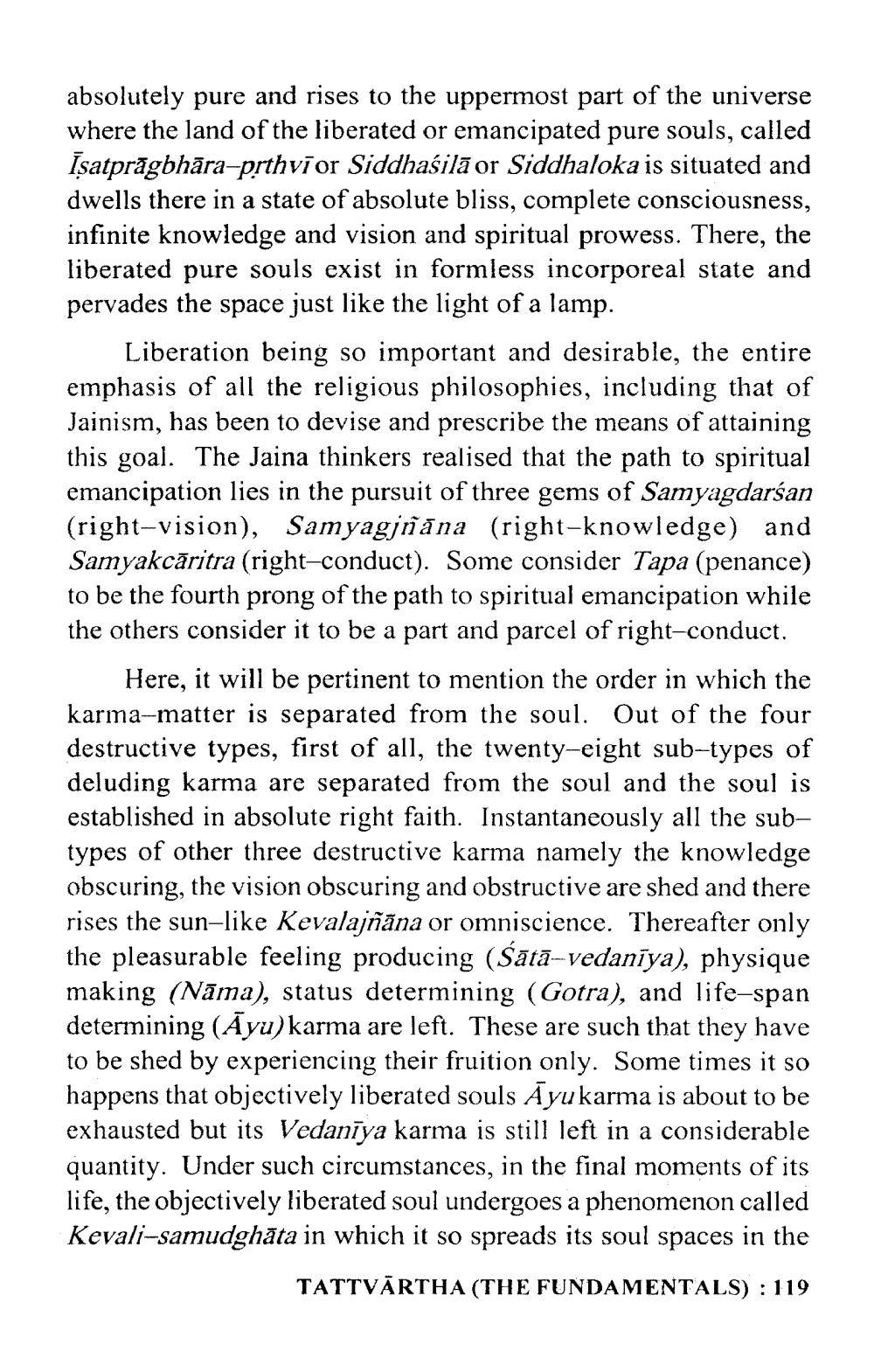________________
absolutely pure and rises to the uppermost part of the universe where the land of the liberated or emancipated pure souls, called Īsatprāgbhāra-prthvior Siddhasilā or Siddhaloka is situated and dwells there in a state of absolute bliss, complete consciousness, infinite knowledge and vision and spiritual prowess. There, the liberated pure souls exist in formless incorporeal state and pervades the space just like the light of a lamp.
Liberation being so important and desirable, the entire emphasis of all the religious philosophies, including that of Jainism, has been to devise and prescribe the means of attaining this goal. The Jaina thinkers realised that the path to spiritual emancipation lies in the pursuit of three gems of Samyagdarśan (right-vision), Samyagjñāna (right-knowledge) and Samyakcăritra (right-conduct). Some consider Tapa (penance) to be the fourth prong of the path to spiritual emancipation while the others consider it to be a part and parcel of right-conduct.
Here, it will be pertinent to mention the order in which the karma-matter is separated from the soul. Out of the four destructive types, first of all, the twenty-eight sub-types of deluding karma are separated from the soul and the soul is established in absolute right faith. Instantaneously all the subtypes of other three destructive karma namely the knowledge obscuring, the vision obscuring and obstructive are shed and there rises the sun-like Kevalajñāna or omniscience. Thereafter only the pleasurable feeling producing (sātā-vedaniya), physique making (Nāma), status determining (Gotra), and life-span determining (Āyu) karma are left. These are such that they have to be shed by experiencing their fruition only. Some times it so happens that objectively liberated souls Ayu karma is about to be exhausted but its Vedanīya karma is still left in a considerable quantity. Under such circumstances, in the final moments of its life, the objectively liberated soul undergoes a phenomenon called Kevali-samudghāta in which it so spreads its soul spaces in the
TATTVĀRTHA (THE FUNDAMENTALS) : 119




